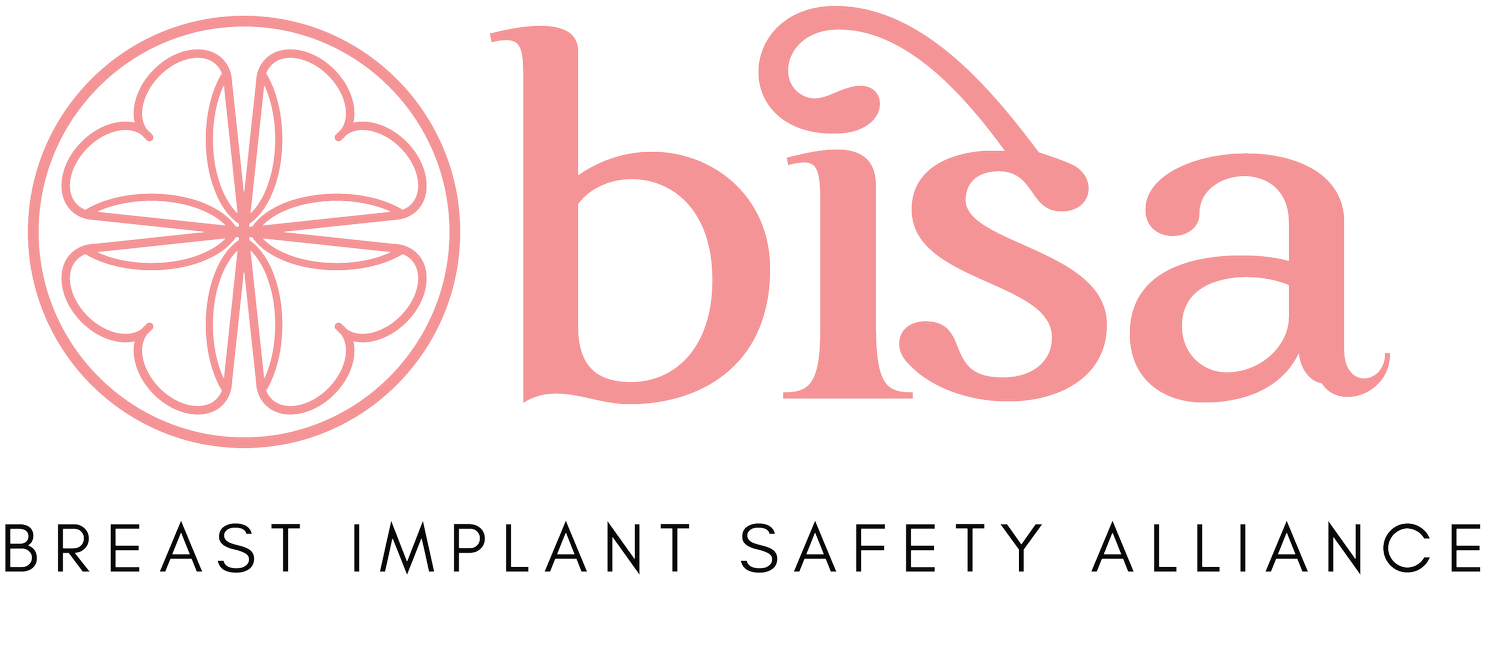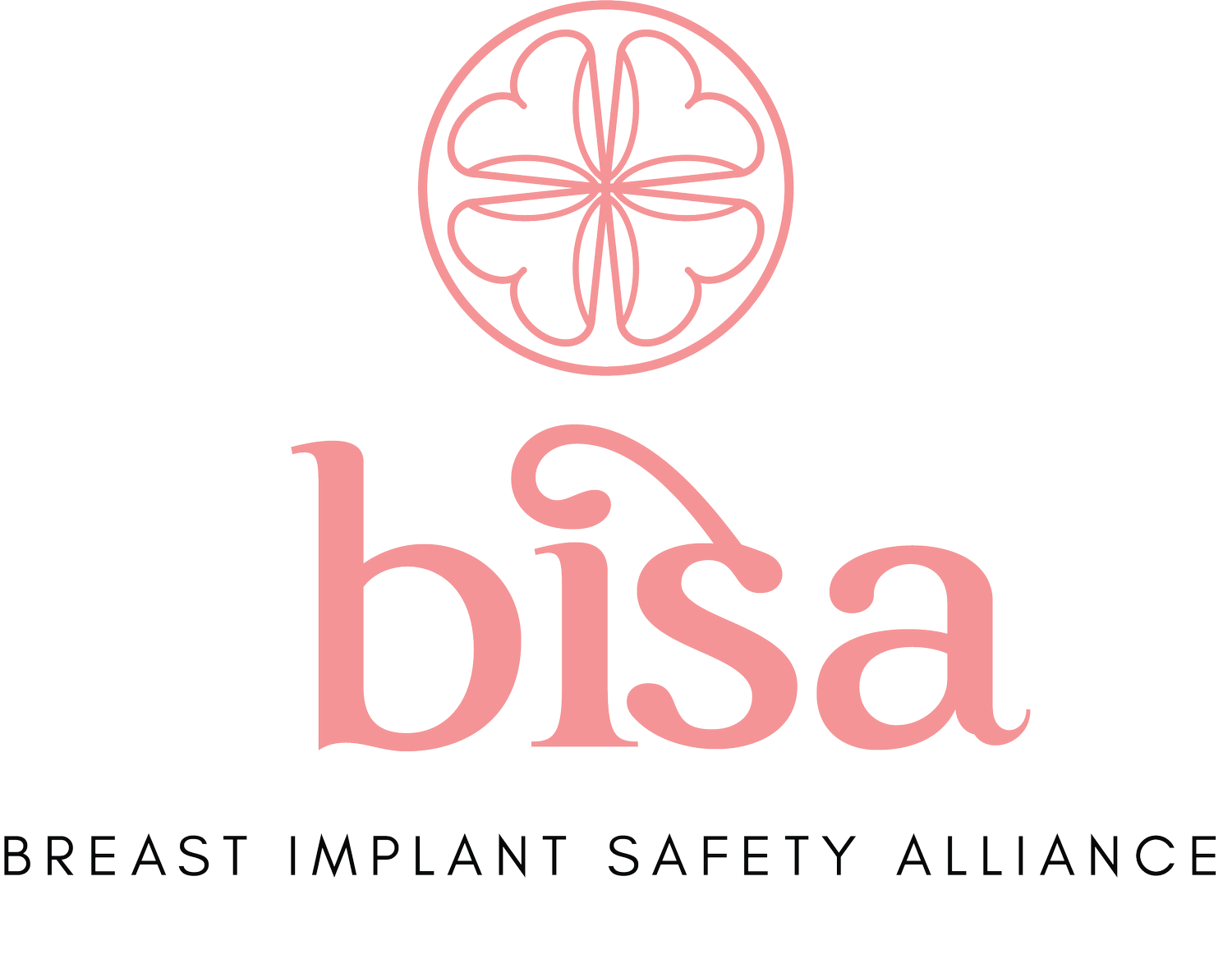FDA Releases New Updates on the Safety and Effectiveness of Breast Implants
On February 6, 2025, the FDA provided updates on the safety and effectiveness of breast implants. The updates include information on:
Medical Device Reports received through June 30, 2024 for Systemic symptoms in women with breast implants
Medical Device Reports received through June 30, 2024 for Breast implant-associated anaplastic large cell lymphoma (BIA-ALCL).
Labeling for approved breast implants, including new breast implants
Why the New FDA Breast Implant Updates Matter
The FDA’s latest safety updates provide crucial data on systemic symptoms commonly referred to as breast implant illness (BII), breast implant-associated cancers like BIA-ALCL and BIA-SCC and other long-term risks. These updates help ensure patient safety, informed decision-making, and industry accountability by:
Tracking Systemic Symptoms (BII): New Medical Device Reports (MDRs) confirm ongoing concerns about fatigue, brain fog, joint pain, and autoimmune-like symptoms linked to implants.
Updating BIA-ALCL and Implant Cancer Cases: The FDA’s latest data on this implant-related cancer improves early detection, diagnosis, and patient awareness.
Improving Implant Labeling: Clearer risk information ensures patients know the dangers of implants before surgery, including updates for newly approved implants.
Enhancing Postmarket Safety Monitoring: Long-term tracking helps identify emerging risks and holds manufacturers accountable.
These updates are critical for protecting patient health, better medical support, and stronger regulation. Breast Implant Safety Alliance (BISA) encourages everyone to review the FDA’s safety information on Breast Implants.
Summary: Medical Device Reports of Systemic Symptoms in Women with Breast Implants
As of June 30, 2024, the FDA has reviewed Medical Device Reports (MDRs) related to systemic symptoms experienced by women with breast implants, often referred to as Breast Implant Illness (BII).
Key Findings:
✔ Common Symptoms Reported: Fatigue (41.1%), joint pain (30.9%), anxiety (22.9%), autoimmune diseases (22.6%), brain fog (22.5%), hair loss (19.6%), and depression (16.9%).
✔ Time to Onset: Symptoms appeared anywhere from immediately after implantation to 42.5 years later, with an average onset time of 5.6 years.
✔ Implant Removal & Symptom Improvement: Of the 4,210 women who had their implants removed, only 785 provided information on symptom status post-removal—with 687 (87.5%) reporting improvement and 98 (12.5%) experiencing no change or worsening symptoms.
FDA's Position & Limitations of MDR Data:
BII is not yet a recognized medical diagnosis, and there are no standardized tests to confirm it.
MDRs are a passive surveillance system, meaning the true number of affected women may be underreported due to missing or duplicate data.
The FDA will continue monitoring these reports and provide updates as needed.
Summary: Medical Device Reports of Breast Implant-Associated Anaplastic Large Cell Lymphoma (BIA-ALCL)
As of June 30, 2024, the FDA has reviewed Medical Device Reports (MDRs) related to breast-implant-associated anaplastic large cell lymphoma (BIA-ALCL).
Key Findings:
✔ Breast Implants & Cancer Risk: Since 2011, the FDA has tracked 1,380 cases of BIA-ALCL, a rare lymphoma linked to textured breast implants.
✔ Death Toll: A total of 64 deaths have been linked to BIA-ALCL, though incomplete data may mean the real number is higher.
✔ Time to Diagnosis: The median time from implant placement to BIA-ALCL diagnosis is 9 years, with a range of 1-22 years.
✔ Most Cases Linked to Allergan Implants: 86% of BIA-ALCL cases reported were associated with Allergan textured implants however cancer has been linked to all types of textured implants.
✔ Symptoms Before Diagnosis: The most common signs of BIA-ALCL include:
Fluid buildup (seroma) – 48%
Breast swelling/pain – 27%
Capsular contracture (hardening of tissue around implant) – 14%
Lumps or peri-implant masses – 11%
✔ Many Reports Lack Key Details:
45% of cases did not specify implant texture
44% did not list whether implants were saline or silicone
58% did not include the reason for implantation (augmentation vs. reconstruction)
FDA Acknowledges Limitations in Data Collection
While MDRs provide valuable insight, the FDA cautions that this data alone cannot determine the true prevalence of BIA-ALCL due to:
Underreporting – Many cases are likely unreported or misdiagnosed.
Incomplete Records – Many reports lack details on implant type, brand, or patient history.
What Patients & Medical Professionals Should Know
Women with textured implants are at higher risk for BIA-ALCL.
Regular check-ups and early symptom recognition are critical.
Explantation (implant removal) is often recommended after diagnosis.
Doctors must fully disclose BIA-ALCL risks as part of informed consent.
Link between textured breast implants and BIA-ALCL is well-established, but data gaps remain.
Summary: Labeling for FDA Approved Breast Implants
The FDA requires labeling for all approved breast implants to ensure patients and physicians are informed about potential risks and benefits. This labeling includes patient brochures, physician instructions, and safety data, which are updated as new post-approval study results become available.
Key Updates on Breast Implant Labeling
FDA’s Communication Efforts
In September 2020, the FDA issued final guidance recommending clearer labeling for saline and silicone gel-filled breast implants.
As of October 27, 2021, the FDA took additional steps to improve breast implant risk communication, including restrictions on sales and distribution to ensure patients receive adequate risk information.
Breast Implant Safety and Long-Term Study Data
The FDA tracks post-approval studies to monitor breast implant safety.
Approved labeling includes warnings about risks such as Breast Implant Illness (BII) and Breast Implant-Associated Anaplastic Large Cell Lymphoma (BIA-ALCL).
Manufacturers must update product labeling when new clinical data emerges, typically after 10-year post-approval studies.
Current FDA-Approved Breast Implants
The FDA provides a detailed list of approved breast implants, categorized into saline-filled and silicone gel-filled options, along with:
Patient and physician labeling
Summary of Safety and Effectiveness Data (SSED)
Long-term study follow-up results
Industry Accountability & Recalls
In July 2019, Allergan voluntarily recalled its BIOCELL textured implants due to their association with BIA-ALCL, while smooth-surfaced implants remain available.
The FDA continues to update breast implant labeling to enhance patient awareness, risk communication, and safety monitoring. Patients considering breast implants should review the latest FDA-approved labeling, safety data, and post-approval study results to make fully informed decisions.
Source:
FDA: Labeling for Approved Breast Implants, current as of February 6, 2025
Summary: FDA’s Breast Implants Postmarket Safety Information
The FDA continues to evaluate the safety and compliance of breast implants after they receive Premarket Approval (PMA). This includes:
✔ Reviewing post-approval studies to track long-term risks and effectiveness.
✔ Monitoring Medical Device Reports (MDRs) for adverse events, including BIA-ALCL and systemic symptoms linked to implants.
✔ Assessing manufacturer compliance with postmarket regulations, including required safety studies and manufacturing updates.
FDA Warning Letters to Breast Implant Manufacturers
When manufacturers fail to meet safety regulations or study requirements, the FDA issues Warning Letters. Notable cases include:
Allergan (AbbVie) – May 2020 (Related to Natrelle Silicone Gel-Filled Implants)
Mentor (J&J) – March 2019 (Issues with MemoryGel & MemoryShape implants)
Sientra – March 2019 (Post-approval study violations)
Ideal Implant – May 2020 (Non-study related violation)
*Some companies have resolved these warnings, while others remain open.
Ongoing Post-Approval Studies (PAS) for Breast Implants
The FDA requires implant manufacturers to conduct long-term safety studies to track risks like implant failure, BIA-ALCL, and systemic illnesses. Some key ongoing studies include:
✔ Allergan: Natrelle and 410 Combined Cohort Study
✔ Mentor: MemoryGel & Shape Glow Study, Device Failure Study
✔ Sientra: US Post-Approval Study (US-PAS)
✔ Motiva: Post-Approval PMA Cohorts Study
*Allergan’s BIOCELL textured implants were recalled in 2019 due to the increased risk of BIA-ALCL, but their smooth implants remain on the market.
Source:
FDA: Breast Implant Postmarket Safety Information, current as of February 6, 2025
BISA’s Key Takeaways for Patients & Advocates
✔ Patients should be aware of ongoing safety concerns like systemic symptoms and various cancers including BIA-ALCL and BIA-SCC. Patients should research and request full informed consent before choosing implants.
✔ Manufacturers must be held accountable for completing post-approval studies to ensure long-term safety.
✔ Advocates continue to push for stricter enforcement of postmarket regulations, as some companies have failed to meet study requirements for years without significant consequences.
📌 Bottom Line: The FDA is monitoring breast implants, but compliance issues persist. Patients deserve full transparency including long term risks and breast implant cancers. Stronger oversight is needed. Read more about what everyone should know about breast implants in 2025.
References & Resources
BISA: What to Know About Breast Implants in 2025
BISA: Breast Implant Safety Updates
FDA: Medical Device Reports for Systemic Symptoms in Women with Breast Implants
FDA: Medical Device Reports of Breast Implant-Associated Anaplastic Large Cell Lymphoma
FDA: Labeling for Approved Breast Implants
FDA: Breast Implant Postmarket Safety Information
FDA: Breast Implants
Breast Implant Iatrogenics: Challenging the Safety Narrative
Is the FDA Failing Women?
About Breast Implant Safety Alliance (BISA)
The Breast Implant Safety Alliance (BISA) is the largest organization of board-certified patient advocates and subject matter experts in the world dedicated to patient and consumer safety relating to breast implants. Representing the millions of individuals worldwide that currently have, had, or are considering breast implants, the alliance is a non-industry funded leading authority dedicated to providing balanced, evidence-based information for informed decision making about breast implant surgery and related issues. Founded in 2019 by women, BISA is a grassroots nonprofit organization led by volunteers who do not receive a salary for their work.
Contact: Maria Gmitro, President | maria@bisanonprofit.org



